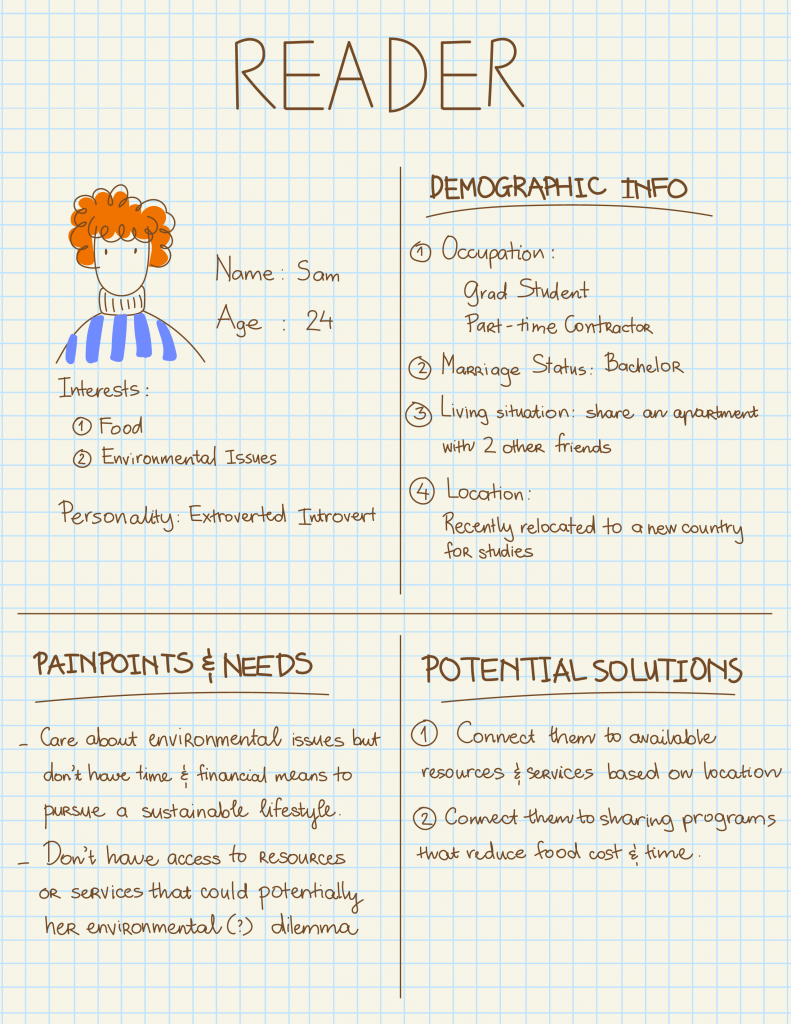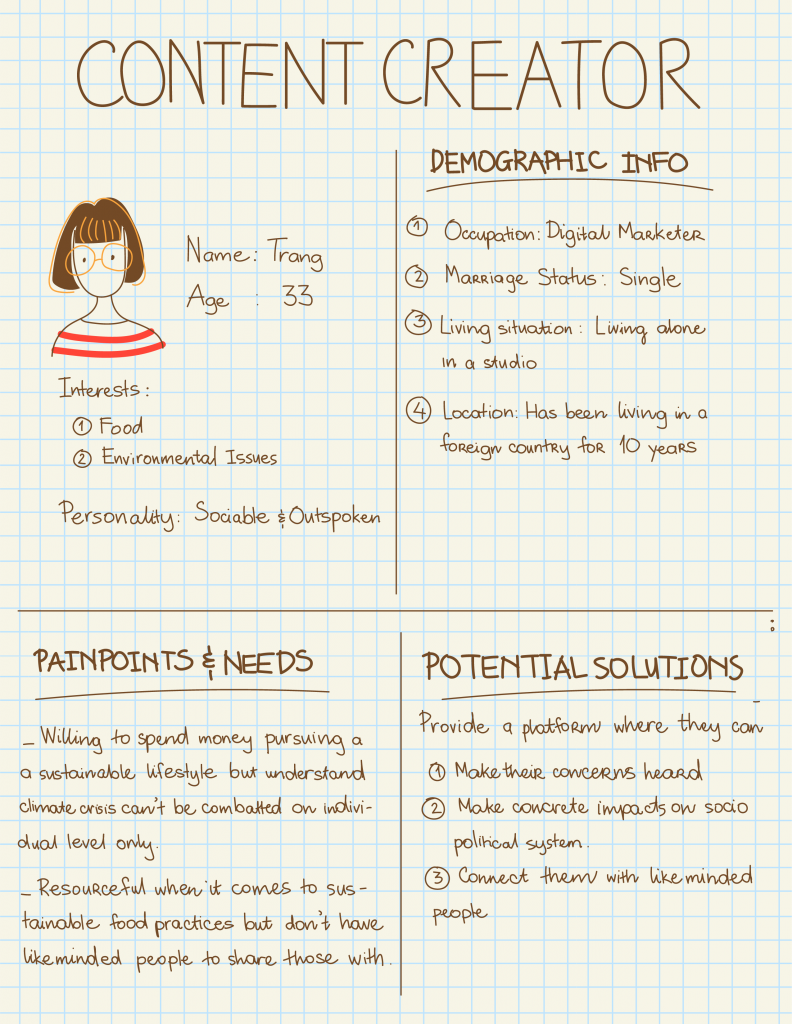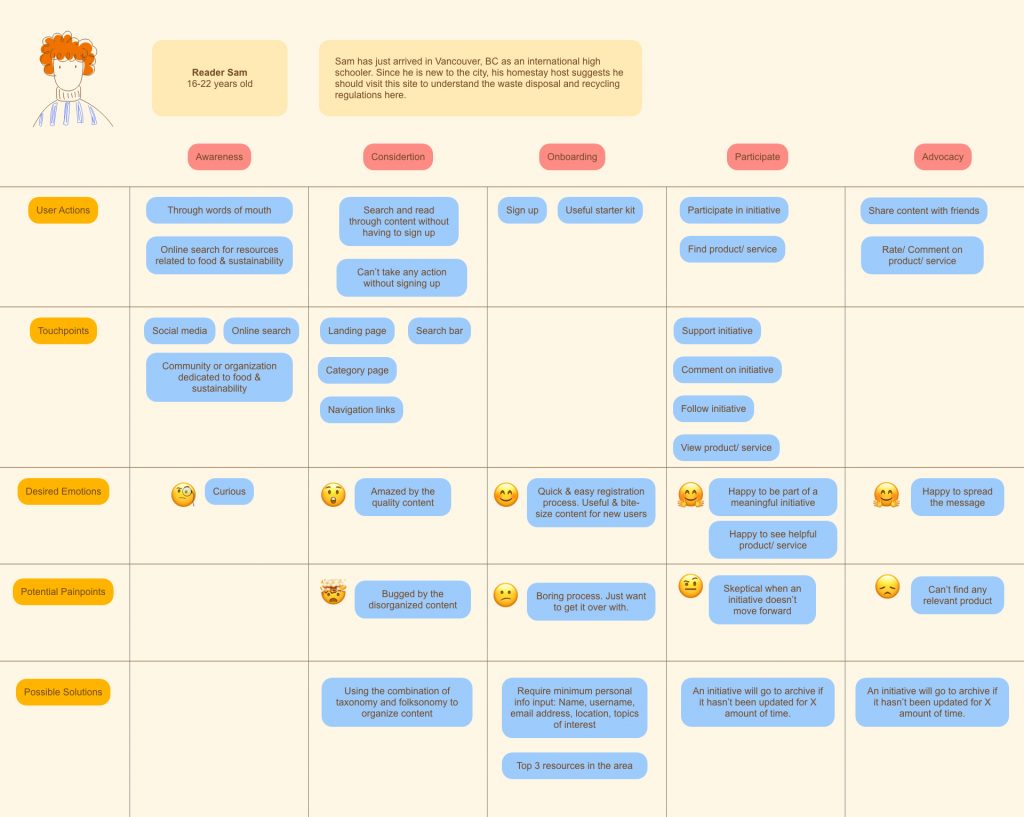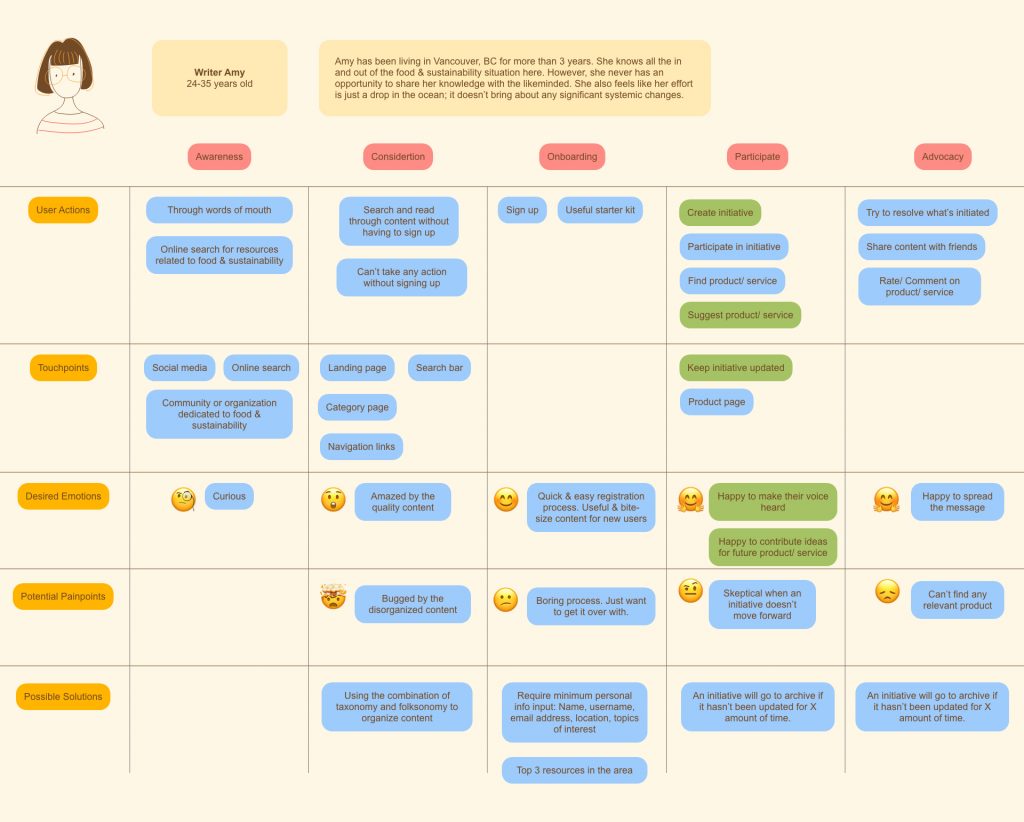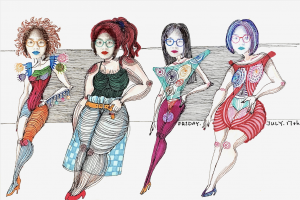FOOD& – Food as the Gateway to Community Engagement And Ecological Thinking
Anh (April) Nhat Nguyen
Abstract
Responsible for 60% of biodiversity loss (WWF 2018), our food system is in dire need of re-imagination and reconstruction. Besides its ecological impacts, food carries within itself the traditions of a family, a community, or a region. It sustains our livelihood, drives conversations, and evokes memories. Regardless of our social or political backgrounds, we are all connected to and through food in one way or another. It is thus a most promising medium to not only raise awareness about ecological matters but also encourage climate actions. Through the application of participatory design, this project aims to gain insights into individuals’ domestic food practices and the challenges they encounter in adopting a more sustainable lifestyle. The findings gathered through a series of exploratory activities inform the development of an actionable-knowledge-sharing platform in which participants learn from and contribute to the collection of sustainable food practices across cultures. The proposed collaborative community will serve to empower environmental advocates to make concrete impacts within the current food system.
Literature Review
Timeline
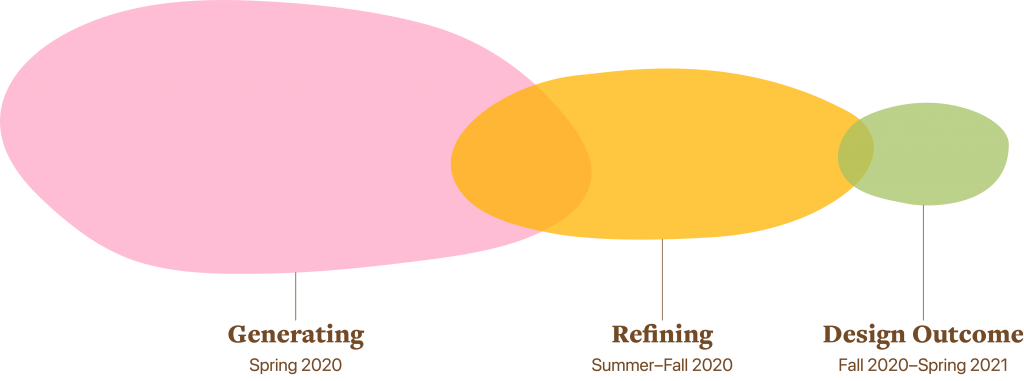
Generating
My design process started with what Steve Portigal calls “bland curiosity”—a simple quest to explore my fields of interest and learn from my participants without the commitment to any particular design outcome (2013, p. 4). Each participatory activity was an experiment of organizing and engaging a group of people in the conversation about food and sustainability using a variety of design methods. The exploratory approach allowed me to investigate multifold components of the research development:• What most pressing aspects of food and its ecological impacts should be addressed?
• Who is my target audience and how do I gain access to them?
• How do I create workshops conducive to organic conversation and robust idea generation?
• What type of dynamic do I want to form between the participants?
• How do I employ my design skills to deliver a relevant solution?The insights gained from this phase informed a more concerted series of participatory activities in the refining stage.
Refining
Based on the experiences acquired from the generating phase, I organized a sequential participatory activity spanning over 3 months in order to:
• understand my stakeholders, their pain points, and their skill set
• involve the audience in the ideation process
• map out the potential directions for the final design outcome
Online Presence
General Survey
User Interview
Prototype Development

Persona
User Journey
Wireframe
Design Iteration
Reflection
The reason for choosing participatory & empathic design approach came from my realization that despite my keen interest in improving the public’s ecological literacy, my knowledge alone fell short in producing sufficient educational materials of environmental issues. Instead of relying solely on my limited resources, I reached out to those sharing the same interests and concerns. Quickly, I found out that a long history of sustainable food practices had already existed and been waiting to be discovered and spread.After a series of participatory activities, I took note that a common sentiment among the participants was their sense of helplessness in the face the broken food system. Their efforts and challenges in adopting more sustainable domestic food practices were deemed insignificant and went unrecognized in the larger food landscape.Meanwhile, their proposed ideas in the brainstorming activity suggested the yearning for connection and their ability to think creatively, especially in a group setting. By building the connection among community members, I hoped to gather the scattered knowledge and energy and give people the opportunity to make concrete impact
Future Directions
Customers & Businesses
The design created in this research project targets citizens with concerns about food and its ecological impacts. It could, however, be extended to entrepreneurs hoping to build their businesses around food and sustainability because their success depends largely on the growth of a loyal customer base. In order to offer competitive price point against food industry giants, these businesses may have to cut down their marketing expenses. This platform is the place where sustainable food businesses could promote their products and reach out to more focused audience without the investment in multiple media channels. Since the platform exists separately from other e-commerce channels, the credibility reviews will be approved or challenged by customers. In this way, the platform not only brings customers and businesses closer but also acts as an autonomous channel for customers to hold businesses for authenticity and transparency. Moreover, this relationship would help drive customer-initiated projects forward. Despite their ability to come up with innovative ideas, prospective customers may lack the technical capacity and financial resources to turn them into reality. Entrepreneurs could connect and collaborate with those eco-conscious customers to generate more human-centric solution
Multi-lingual & Multi-regional Resources
A feature that has not been fleshed out in the final design outcome is the ability to toggle between multilingual resources related to food and sustainability. This is the feature that knowledge-sharing platforms such as Wikipedia and Quora have adopted to invite more culturally diverse resources, although the content is still predominantly written in English. Should the language barriers be overcome with the help of translation tools and volunteers’ contributions, the cross-cultural information exchange enabled by multi-lingual options will become more inclusive and robust. For example, once, out of curiosity, I translated an English-written article about food and sustainability and uploaded it to a Vietnamese page dedicated to the matters for an open discussion. To my surprise, the post attracted significant participation from the page members whose opinions were shaped by their social and cultural backgrounds and differed from the mainstream English sources. The instance strengthens my belief in the necessity of integrating a multi-lingual aspect into the platform
